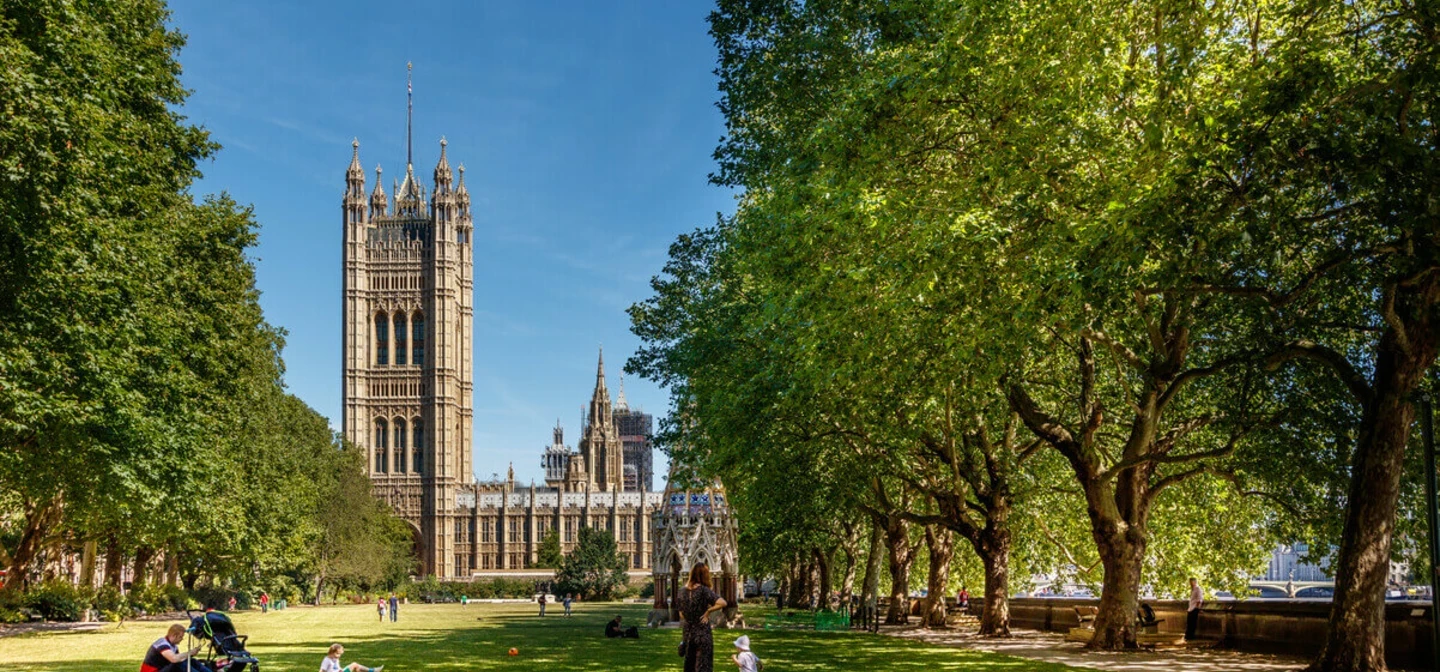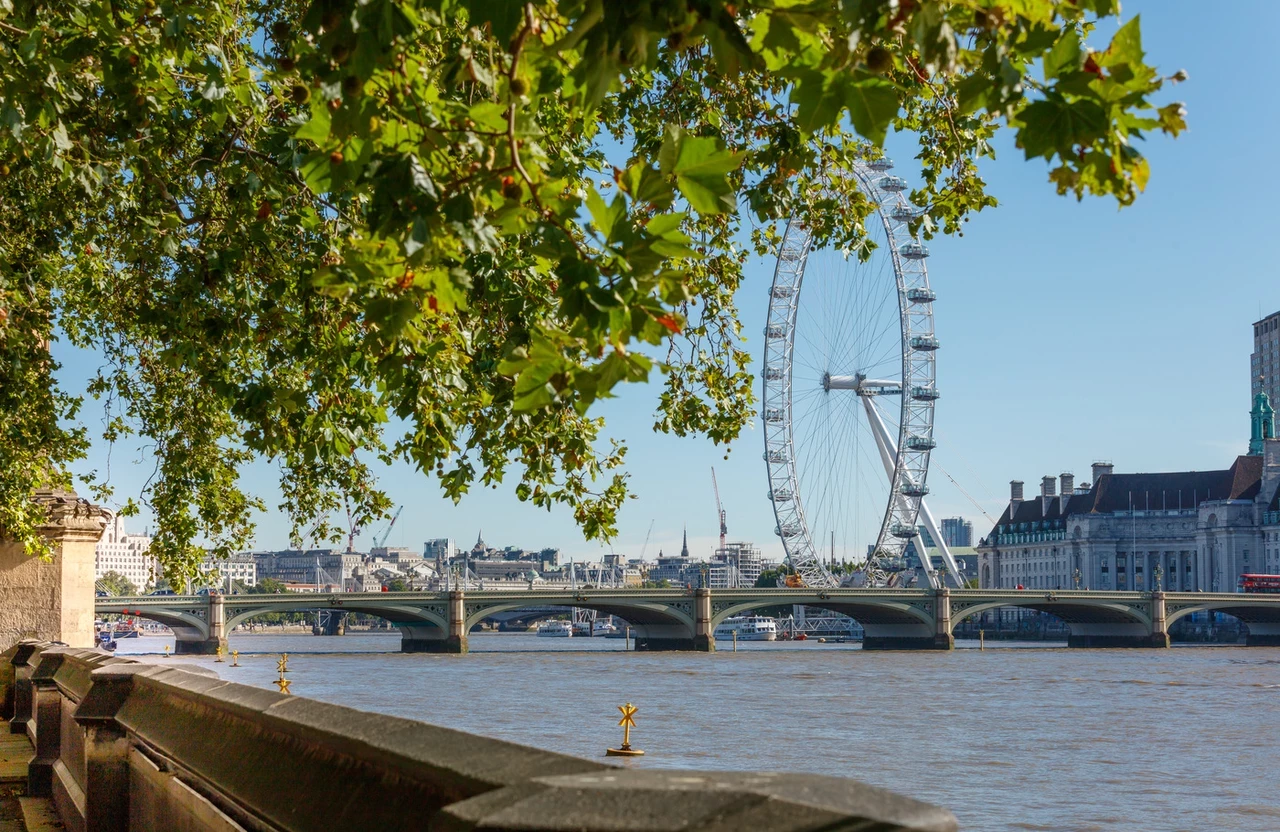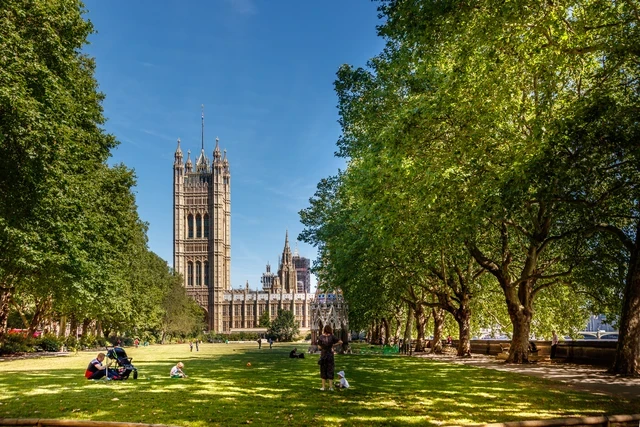
Welcome to Victoria Tower Gardens
Nestled between the sweeping River Thames and the spectacular Houses of Parliament, this park is a little pocket of peace at the heart of political power.
Key information
The theme of freedom is woven through this tranquil green space in the form of memorials commemorating some of the most important political movements in British History. This is why some have called this space ‘The Garden of Conscience’.

Greeting you at the north entrance is none other than Emmeline Pankhurst – the fearless leader of the suffragettes, who risked their lives to win women the right to vote. Pankhurst’s statue stands in the shadow of the gloriously gothic Victoria Tower that gives the park its name – kick back on the grass and admire the architecture!
Nearby, you’ll discover a famous sculpture celebrating freedom: The Burghers of Calais by celebrated French sculptor, Auguste Rodin. Towards the southern end of the park, it’s impossible to miss the jewel-like Buxton Memorial, which commemorates the passing of the Slavery Abolition Act of 1833.
This space isn’t all politics, though. The tree-lined walkway along the bank of the Thames offers stunning views across to the Albert Embankment, framed by Westminster Bridge on one side and Lambeth Bridge on the other. At the south end of the park is the award-winning Horseferry Playground, where children will delight in the water installation that reflects the history of the Thames.
For those seeking a deeper connection to history, guided tours are available that delve into the stories behind the park’s memorials and sculptures. These tours offer insights into the lives of the courageous figures commemorated here and the movements they championed. Additionally, seasonal events held in Victoria Tower Gardens provide opportunities to engage with contemporary issues of social justice and human rights, making this park not just a place of reflection, but also a hub for meaningful dialogue and community engagement.
Discover more about The Royal Parks
-
Why are trees so important?
Trees are vital. As the biggest plants on the planet, they give us oxygen, store carbon, stabilise the soil and give life to the world’s wildlife.
-
The best nature walks in London
A selection of the best nature walks in London for you to enjoy
